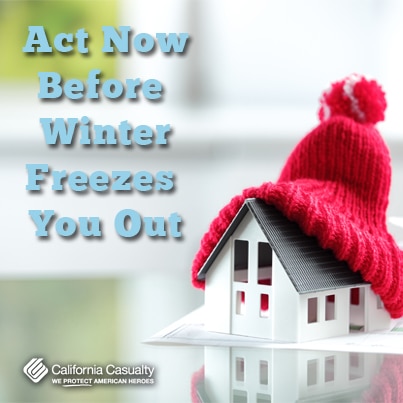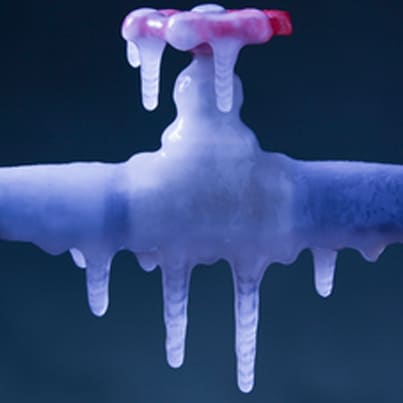
by California Casualty | Homeowners Insurance Info |
From pulling weeds to cleaning floors, it seems like house work never ends, but it’s a lot easier to tackle before the change of seasons. The warmth of summer is a good time to do maintenance that will prevent damage, prepare your home for winter, and add long-lasting value.
Here are some important mid-summer home maintenance tips:
- Do an energy audit and start fixing insulation and cracks
- Insulate hot water pipes
- Clean patio furniture
- Scrub your concrete
- Inspect and reseal decks
- Patch concrete and asphalt cracks
- Prune or remove problem trees and shrubs
- Clean exhaust fans
- Fix the fence
- Make your landscaping “critter proof” (deer, rabbits and other animals can cause thousands of dollars of damage to your plants and trees)
Doing regular maintenance can not only protect your home, but it can enhance the value of your largest investment. Most realtors and home repair experts say simple projects can add thousands of dollars to your home’s worth. Here are some tips that give the best payback:
- Clean and reduce the clutter around your home
- Spruce up your yard
- Repaint the interior and exterior
- Upgrade your lighting and light switches
- Add wood trim
Don’t forget another vital piece to preserving your home and all the things that come with it; insurance. Now is the time to get a home insurance update and policy review to make sure your precious items are fully covered at the best value. Have you made improvements that could land you big discounts? Call a California Casualty advisor today for a no hassle policy review at 1.800.800.9410, or visit www.calcas.com.
For more information visit:
https://bit.ly/2jMXf9c
https://bit.ly/2jK7Y4c

by California Casualty | Auto Insurance Info, Safety |
May 24 is National Road Trip Day! As May comes to a close, classes are ending, the days are getting longer, and temperatures are slowly beginning to rise. You know what else that means? Vacation. Summer is calling and many American families are planning to spend their...
by California Casualty | Homeowners Insurance Info |

Fall is my favorite time of year; the air turns crisp and cool, the leaves change brilliant colors and it’s a nice breather before winter sends its icy grip. As the days grow shorter and the leaves fall, it’s the perfect time to look around your home and get prepared for winter. Fall’s mild temperatures and adequate daylight provides an opportunity to check the heater, repair gutters and add extra insulation to the attic. An early autumn storm or blizzard is no time to learn you have leaks or other problems.
The Insurance Information Institute estimates that winter-related damage causes over a billion dollars in insurance losses annually. Prevent your home from being a statistic; use this checklist to make sure it’s ready for the onslaught of winter:
- Have your heating system checked and cleaned
- Inspect ceilings, windows and outer walls for cracks
- Change air filters
- Check your pipes and plumbing
- Inspect your roof for wear or damage and clean the gutters
- Install weather stripping and caulk around windows and doors
- Seal up foundation and driveway cracks
- Check your fireplace and chimney for cracks or leaks
Look around your deck or patio and yard; now is the time to clean and store seasonal outdoor furniture and flower pots, drain sprinkler systems, trim trees and shrubs, fertilize lawns and mulch gardens. Don’t forget to service the snow blower and lawn mower while you are at it.
You also need to make sure your home is fire safe and you check your smoke and carbon monoxide detectors; the National Fire Protection Association warns that home fires and carbon monoxide poisonings climb during the fall and winter months. They recommend:
- Installing smoke alarms in every bedroom, outside each separate sleeping area and on all levels of the home
- Installing carbon monoxide detectors in a central location outside each sleeping area and on all levels of the home
- Testing all smoke and carbon monoxide detectors and replacing the batteries once a year (fall is the preferred time)
- Having heating equipment and chimneys cleaned and inspected every year by a qualified professional
- Keeping any flammable material at least three feet from heat sources
- Checking fire extinguishers
- Knowing and practicing home escape routes
A vital preparation for any season is to review and understand your homeowners or renters insurance policy. Contact a California Casualty advisor today for a free, no hassle insurance policy review and comparison at 1.800.800.9410. You may also find you qualify for significant discounts and better coverage.
And, don’t forget your cars and trucks. For tips to make sure your vehicle is prepared for winter please visit https://mycalcas.com/2012/11/preparing-your-car-for-winter/.
Sources for this article:
https://www.resnet.us/library/preparing-your-home-for-fall/
https://www.nfpa.org/safety-information/safety-tip-sheets
https://www.iii.org/fact-statistic/winter-storms
https://www.naic.org/documents/consumer_guide_home_booklet.pdf
by California Casualty | Homeowners Insurance Info |

You and your home have ridden out one of the coldest nights of the year; the weather is warming when suddenly you hear water running inside a room. It’s a burst pipe, which can lead to substantial damage in your home.
How much damage can a broken pipe cause? The Federal Emergency Management Agency estimates that just two inches of water can cause more than $10,000 for repairs and replacement of flooded items. Six inches of water can add up to more than $30,000.
While frozen pipes are most common in northern and mountainous areas of the country, they can occur anywhere when a major polar front hits. Homes from California to Florida have suffered water damage from broken pipes after spells of severe cold.
So before the thermometer plunges, here are things the American Red Cross advises you do to prevent pipes from freezing:
- Disconnect outside hoses from faucets
- Insulate water pipes, especially along exterior walls and unheated areas
- Add insulation to walls and attics where pipes may run
Once the sub-zero weather hits you should:
- Let faucets drip to prevent freezing
- Keep the thermostat above 55 degrees
- Make sure garage doors are closed
- Open kitchen and bathroom cabinets to allow warm air to circulate around plumbing
So you’ve prepared and kept as much heat as possible going to cold areas, but the cold air still froze a pipe; what now? Stay calm but act as quickly as possible to:
- Locate where the pipe is frozen
- Open the nearest faucet to relieve pressure when the ice thaws
- Slowly warm the pipe with a heating pad, hair dryer, space heater or wrapping it with hot towels – never use a blow torch or open flame
If the pipe has cracked or broken, immediately turn off water at the main water valve and call a plumber. Shutting off the water will prevent further damage.
Once a pipe freezes, odds are it will happen again. Here are some tips to prevent it in the future:
- Hire a plumber to relocate to a warmer area
- Add more insulation in walls, attics and crawl spaces
- Wrap the pipe with electric heat tape, when temperatures drop, plug it in
Remember, if a burst pipe sends water into your home, contact a California Casualty Claims advisor as soon as possible; we can help get you started on the clean-up.
And before the next cold front hits, call a California Casualty advisor for a free auto or home insurance policy comparison and review to make sure you are protected against winter’s fury, 1.800.800.9410.
Sources for this article:
https://home.costhelper.com/water-leak.html
https://www.floodsmart.gov/floodsmart/pages/flooding_flood_risks/the_cost_of_flooding.jsp
https://www.redcross.org/prepare/disaster/winter-storm/preventing-thawing-frozen-pipes
This article is furnished by California Casualty, providing auto and home insurance to teachers, law enforcement officers, firefighters and nurses. Get a quote at 1.800.800.9410 or www.calcas.com.




